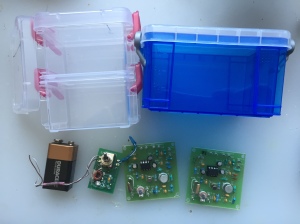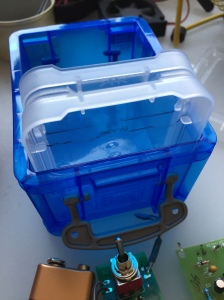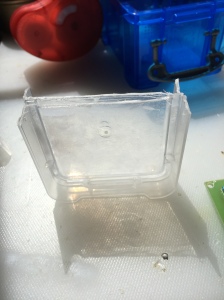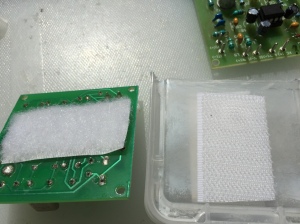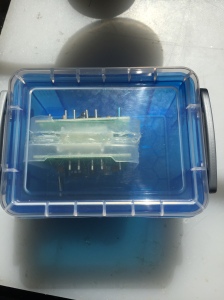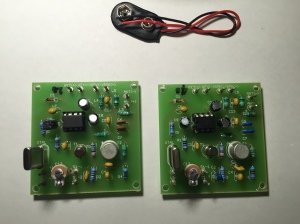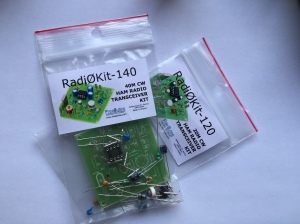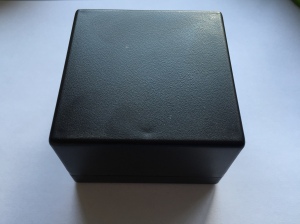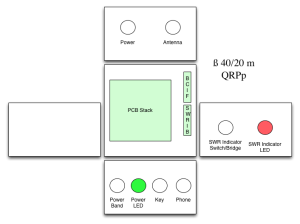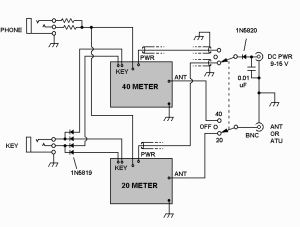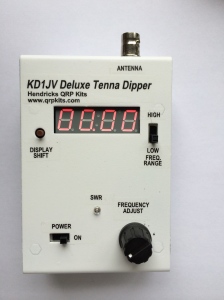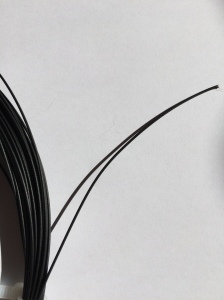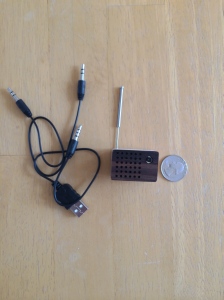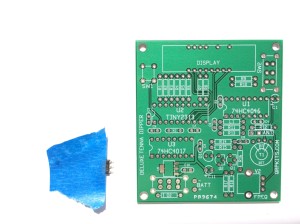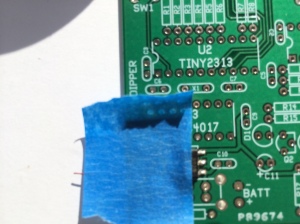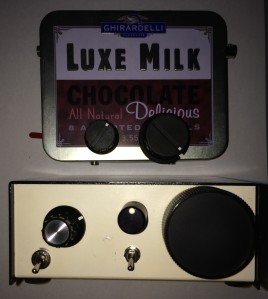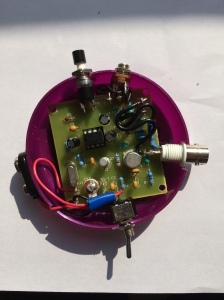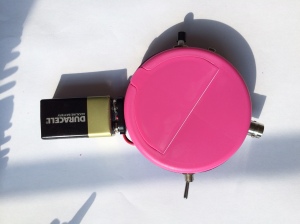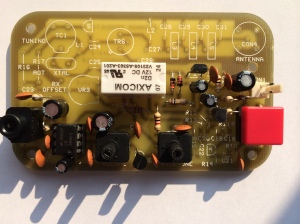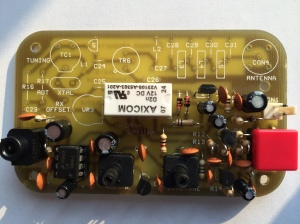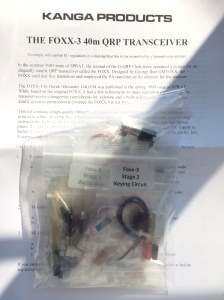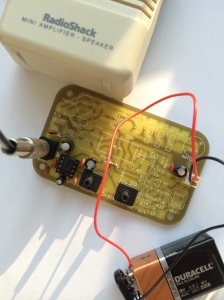It has been a long while. Life got in the way. Now I’ve gotten the bug again and doing some “ham” radio stuff again.
Last time I had finished building the 40 and 20m Radi0Kits.
Having spent some time away from building stuff I went back and looked over my idea of trying to cram everything into the tiny case I had. Reality hit and I’ve decided trying to get everything into the space would be beyond my capability to keep things neat and tidy. That and I had a kit that would be a better fit. Now I had to find a new case, so I went to the local office supply store and found these.
I got two sizes. The pictures show the containers next to the built kits, a 9v battery, and the Hendrick SWR Bridge I’m going to use. The clear containers are a little smaller than the size of the original black enclosure I was going to use.
I’ve decided to use the blue enclosure.
One nice thing I discovered is that the lids of the small enclosure fit nicely into the large one.
They are just a little too tall. You can see the black scribe marks that I used to mark the actual height. The perspective makes them look at the wrong height. I’m going to mount the two kits back to back and use the cut off lids as a spacer/insulator.
Using an Exacto I cut two lids to size and epoxied them back to back. Now I had a two sided drawer. Here is a photo before trimming and bonding the top edges together.
Next, I had to figure out how to mount the kits to the drawers. I considered screws and nuts but with two back to back there was no room. I also wanted to be able to easily get to the boards if I needed to. I decided on hook/latch tape (Velcro®).
Here is the general idea.
The tape doesn’t really bond to the circuit board well over the solder connections, but it has enough grip to not fall off when pressed down to the circuit board over the soldered connections.
Now I needed to make sure the boards would hold and the drawers would allow the lid to close. I tried the drawers aligned with the narrow edge of the blue container and it was a perfect fit. Then it hit me. Aligned this way I had no room to route the connections from one side (one of the kits) over to the other. I had another problem. How to secure the drawers to the case itself.
Playing around with different positions I hit upon the following one.
The photo shows the two boards Velcro™-ed to the drawers. In this position I can route connections to the front and back and over to the side from both kits. Additionally, it turns out the size is just right so that when the top lid of the blue box is secured it’s a pressure-fit and is enough to hold the entire assembly tightly in place.
It’s not as neat and tidy as I had hoped but it is definitely better than the original version would have been.
Next time, I hope to have the power LED and BCI filter circuits done. I ordered a bi-color LED whose color will indicate the band being powered. (If I don’t blow it up first).

